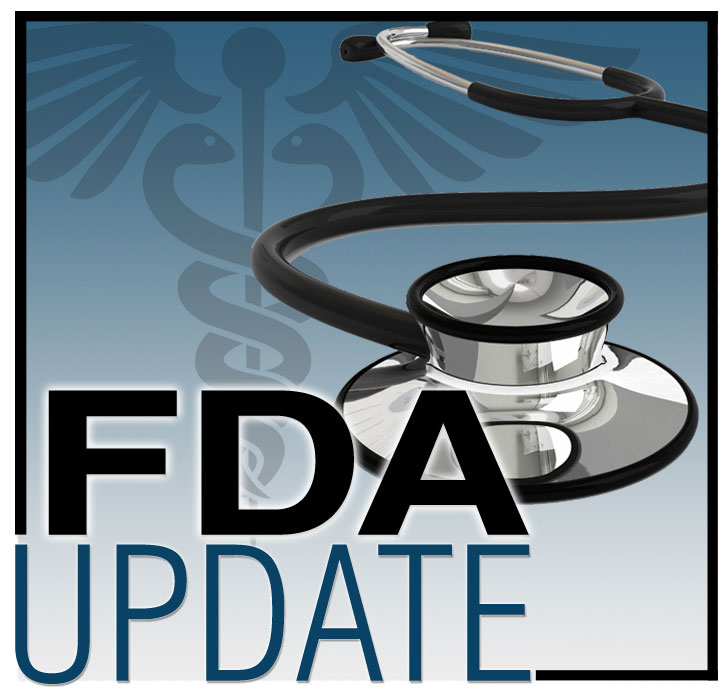
On March 22, 2018, the U.S. Food and Drug Administration (FDA) approved nilotinib (Tasigna®) for pediatric patients 1 year of age or older with newly diagnosed Philadelphia chromosome positive chronic myeloid leukemia in chronic phase (Ph+ CML-CP) or Ph+ CML-CP resistant or intolerant to prior tyrosine-kinase inhibitor (TKI) therapy.
Approval was based on results in 69 pediatric patients with Ph+ CML-CP from two open-label, single-arm, multi-center trials: CAMN107A2120 (NCT01077544) in pediatric patients with Ph+ CML-CP resistant or intolerant to imatinib or dasatinib (n=11) and CAMN107A2203 (NCT01844765) in pediatric patients with Ph+ CML-CP resistant or intolerant to imatinib or dasatinib (n=33) and newly diagnosed Ph+ CML-CP (n=25). In both trials, patients received nilotinib 230 mg/m2 twice daily, rounded to the nearest 50 mg dose (maximum single dose of 400 mg) in 28-day treatment cycles. The median time on treatment was 13.8 months (range: 0.7 to 30.9 months).
In patients with resistant or intolerant Ph+ CML-CP, the major molecular response rate (MMR; BCR-ABL/ABL ≤0.1% IS) was 40.9% (18/44, 95% CI: 26.3%, 56.8%) at 12 cycles. In patients with newly diagnosed Ph+ CML-CP, the MMR rate was 60.0% (15/25, 95% CI: 38.7%, 78.9%) at 12 cycles. In patients with resistant or intolerant CML, the cumulative MMR rate was 47.7% (21/44) by cycle 12. In patients with newly diagnosed CML, the cumulative MMR rate was 64.0% (16/25) by cycle 12.
Among patients with resistant or intolerant CML, 4.5% of patients achieved BCR-ABL/ABL ≤0.0032% IS (MR4.5) by the cut-off date. Among patients with newly diagnosed CML, the percentage who achieved MR4.5 was 28.0%.
The safety profile in pediatric patients is similar to the known safety profile in adults with Ph+ CML-CP. Common adverse reactions (greater than 20%) were hyperbilirubinemia, thrombocytopenia, rash, neutropenia, lymphopenia, alanine aminotransferase (ALT) increased, headache, anemia, pyrexia, nausea, upper respiratory tract infection, aspartate aminotransferase increased, and vomiting. The most common grade 3/4 adverse reactions were ALT increased and hyperbilirubinemia. Increase in QTcF greater than 30 msec from baseline was observed in 17 patients (25%). No patient had an absolute QTcF of greater than 500 msec or QTcF increase of greater than 60 msec from baseline.
The recommended pediatric dose is 230 mg/m2 orally twice daily, rounded to the nearest 50 mg dose (maximum single dose of 400 mg).
Full prescribing information is available.
FDA granted this application priority review and orphan drug designation. A description of FDA expedited programs is in the Guidance for Industry: Expedited Programs for Serious Conditions-Drugs and Biologics.
Healthcare professionals should report all serious adverse events suspected to be associated with the use of any medicine and device to FDA’s MedWatch Reporting System by completing a form online, by faxing (1-800-FDA-0178) or mailing the postage-paid address form provided online, or by telephone (1-800-FDA-1088).
Follow the Oncology Center of Excellence on Twitter @FDAOncology.
Check out recent approvals at the OCE’s podcast, Drug Information Soundcast in Clinical Oncology (DISCO).
In collaboration with the FDA and as a service to our members, ONS provides updates on recent FDA approvals and other important FDA actions (e.g., updated safety information, new prescribing information) pertaining to therapies for patients with cancer. This allows the agency to inform oncologists and professionals in oncology-related fields in a timely manner. Included in the FDA updates is a link to the product label or to other sites for additional relevant clinical information. In supplying this information, ONS does not endorse any product or therapy and does not take any position on the safety or efficacy of the product or therapy described.





